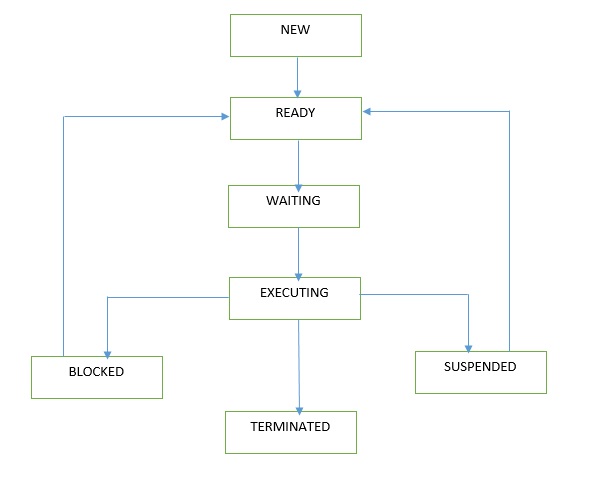Home »
Operating System
Process Management of Operating System
In this tutorial, we will learn about the process management of an operating system in the computer system, how an operating system can manage the running processes of our computer system, and the different states of any process.
By Amit Shukla Last updated : May 06, 2023
What is Process Management of Operating System?
Process management involve the execution of various tasks such as creation of processes, scheduling of processes, management of deadlock, and termination of processes. It is responsibility of operating system to manage all the running processes of the system. Operating system manages processes by performing tasks such as resource allocation and process scheduling. When a process runs on computer device memory and CPU of computer are utilized. The operating system also has to synchronize the different processes of computer system.
A process consists of set of instruction to be executed called process code. A process is also associated with some data that is to be processed. The resources that a process required for its execution is called process components. There is also a state that is associated with a process at a particular instant of time called process state. Similar to these concepts, there are number of concepts associated with the process management function of an operating system. Some of those concepts are given as following.
- Process State
- Process Control Block (PCB)
- Process Operations
- Process Scheduling
- Process Synchronization
- Interprocess Communication
- Deadlock
Process States
A process state can be defined as the condition of process at a particular instant of time. Process state defines the current position of process. This help to get detail of our process at a particular instant. There are basically seven states of process in operating system. The following are the seven states of process:
- New
When any program is calls from secondary memory or calls from hard disk to primary memory or RAM then the new process is created. Basically it specified the time when a process is created.
- Ready
In this time interval the state of the process is loaded into the primary memory and ready for execution.
- Waiting
In this sate the process is kept on hold and other process are allowed to start 0their execution. In other words, it specifies the time interval when a process waits for the allocation of CPU time and the other resources for its execution.
- Executing
This is the main state of any process in this state the process is executing. In other words, it is the time interval when a process is being executed by CPU.
- Blocked
It specifies the time interval when a process is waiting for an event like input / output operations to complete.
- Suspended
It specifies the time when a process is ready for execution but has not been placed in the ready queue by operating system.
- Terminated
It specifies the time when a process is terminated or ended and all the resources that are utilized by process and memory that is utilized by the process are free.

The above figure shows that the process is initially in the new state when it is created. After the process is created the state of process is changed to ready where the process is loaded into the primary memory or in RAM. Then the state of process is changed to waiting when the process waits for the allocation of CPU time. The process sates changes to executing state after the CPU time and other resources allocated to it and the process starts running. After the process running or executed successfully then the process is ended or the process is terminated and the process state is changes to terminate.
Advertisement
Advertisement